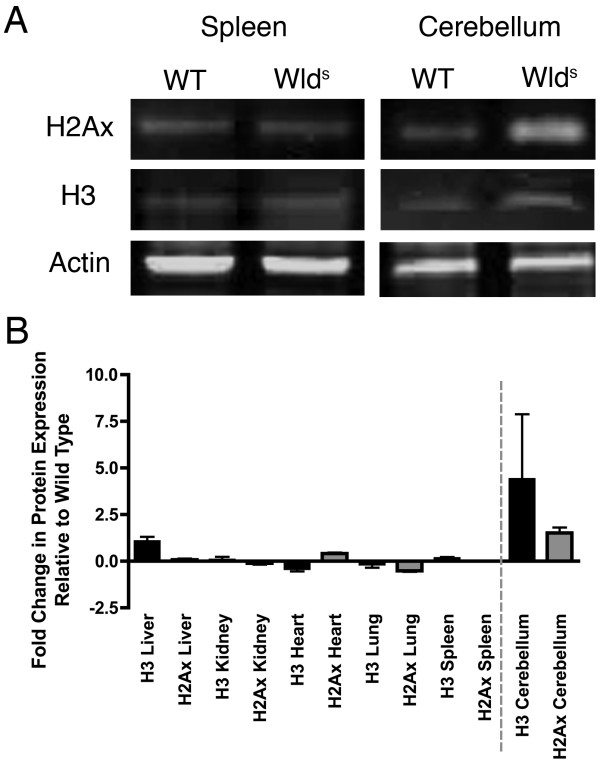Figure 5.
Cell cycle and cell stress pathway alterations were specific to neuronal tissue. A - Representative examples of bands obtained from quantitative fluorescent western blots from wild-type and WldS mouse spleen and cerebellum probed with antibodies against cell stress (H2Ax) and cell cycle (H3) proteins (beta actin is shown as a loading control). Spleen was chosen because it had the highest WldS protein expression levels of all the non-neuronal tissues examined (Figure 1). Note the increases in H2Ax and H3 in WldS cerebellum compared to wild-type mice, but no change in the expression of either protein in the spleen. B - Bar chart showing cell cycle (H3) and cell stress (H2Ax) protein levels in a range of organs from WldS mice expressed as fold change in protein relative to wild-type. Both proteins examined showed only very minor fluctuations in expression levels in non-neuronal tissue (left hand side of dotted line). The magnitude of change in non-neuronal tissue did not begin to approach those observed in the cerebellum of WldS mice (right hand side of dotted line). A minimum of 3 mice per genotype were used for each experiment.

